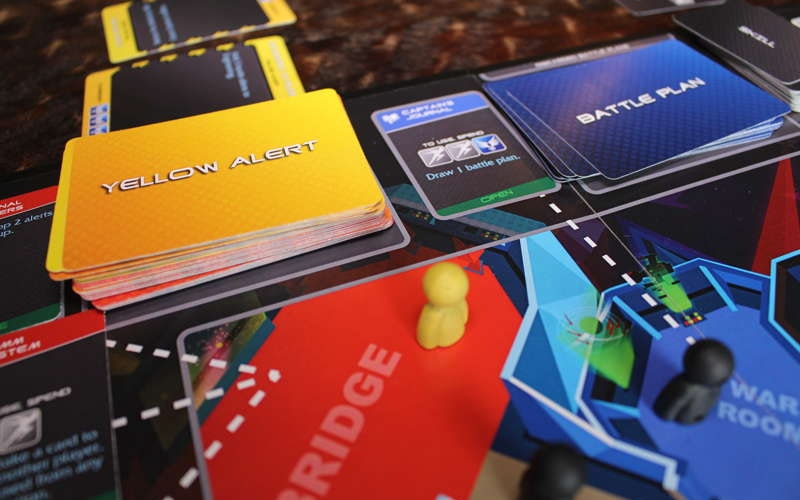
Games
The Captain is Dead: Saving the Crew, Serving God’s Kingdom
God’s sovereignty extends to our hobbies and pastimes, including the games we play on the dining room table. In the case of one relatively new board game, The Captain is Dead, game mechanics and aesthetics combine to create an inherently communal experience that is intellectually engrossing, emotionally immersive and even spiritually instructive.
Without a doubt this is one of my favorite board games of all time. After who-knows-how-many plays, I have yet to see The Captain is Dead fail to suck players helplessly, and perhaps haplessly, into the drama. Like all “geek-generation” games, it is intensely theme-driven, serving up a classic starship-and-crew story to delight the most ardent Star Trek fan.
The game begins in the middle of the story. Up to seven players find themselves aboard a starship, adrift in space and besieged within and without by hostile aliens. The Captain is Dead is a cooperative game, in which players win or lose by working together against the game itself. Known for thematic drama and mounting tension, co-op games demand strong teamwork. In The Captain is Dead, the board represents a classic starship interior, with all the familiar spaces and systems: the bridge, sick bay, engineering, photon torpedoes and the transporter. The crew has one mission: repair the damaged Jump Core. An intensifying series of alerts knock out vital systems, release obstructive anomalies, injure crew members, insert hostile aliens and damage the shields. As the title indicates, the ship’s captain has been written out of the story, leaving behind archetypes such as the First Officer, Engineer and Ship’s Doctor, as well as a handful of quirkier roles, such as the resourceful Janitor, expendable Crewman and implacable Hologram.
The game particularly calls to mind Paul’s commentary on spiritual gifts in 1 Corinthians 12.
The character-driven elements of The Captain is Dead set it apart from other cooperative board games, investing the players emotionally and even spiritually. The game particularly calls to mind Paul’s commentary on spiritual gifts in 1 Corinthians 12. To prevail, the crew must work together as a unit, as one body: “If one part suffers, every part suffers with it; if one part is honored, every part rejoices with it.” Each character possesses unique abilities and certain limitations. Some roles, such as the Chief Engineer, are specialized to a particular task (repairing the Jump Core). Others, such as the Scholar, are more generalized to a category of tasks (Scientific, for example), but can perform other jobs in a pinch. And then there’s the Janitor. With versatility as his specialty, he can do almost any task in order to snatch the crew from the very maw of oblivion. To win, the players must use their characters’ gifts as they are best suited.
And so it is with the life of the church. Our Captain died, but He lives again and has equipped the crew, His church, to lead the passengers to safety until He rejoins the “ship” to set it to rights. Those whom God has gifted to teach ought to teach; and those to help, help; and to administer, administer. Working together in ministry, such gifts can “save others by snatching them from the fire.” The Captain is Dead transports players beyond a mere table-top experience. Whether they acknowledge it or not, the game gives them a taste of what it means to serve God’s Kingdom.
Topics: Games